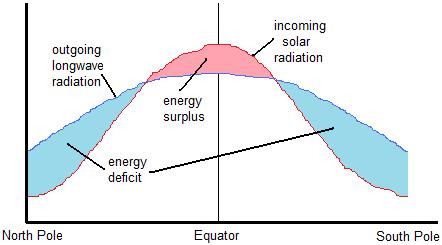01.03.11
Meteorology 101: Definitions – Meteorology, the Atmosphere, and Weather
Today I’d like to start a weather education series. While some of you may have a background in meteorology, others may be confused at times when I speak of instability and wind shear.
So, beginning with the basics and covering topics such as weather maps and severe weather forecasting, every Monday I will give a short lesson on meteorology. The blog posts will build upon each other, and eventually I will make a list of links to the posts and put it on my website.
————————————————–
What is meteorology?
Meteorology (also known as atmospheric science) is the study of the atmosphere and weather. Climatology is the study of climate.
What is the atmosphere?
The earth’s atmosphere is a thin layer of air extending from the earth’s surface to a height of about 12 km (7.5 miles).
Atmospheric composition:
- Nitrogen: ~78%
- Oxygen: ~21%
- Argon: ~0.93%
- Carbon dioxide: ~0.039%
- Water vapor: variable, from 0 to 4%
- Other trace gases, including ozone and methane
What is weather?
Weather is the state of the atmosphere at any given place and time. For example, the weather conditions at midnight New Year’s Eve 2010 in Seattle, Washington included a temperature of 27 °F, a relative humidity of 66%, calm winds, and clear skies.
Climate, in contrast, is the average weather at any given place over a long period of time. For example, the average high temperature in Seattle for the month of January, a component of the city’s climate, is 46 °F.
Why is there weather?
As described in last week’s post, “What If…We Could Prevent Storms From Occurring?“, the sun heats the earth unevenly (because of earth’s tilt). Some of this radiation is absorbed by the earth, which then emits longwave radiation back to space.
Long story short (check out that blog post for more detail), the tropics receive more radiation than they emit, and the poles emit more radiation than they receive. This means the tropics have a net surplus of radiation and the poles have a net deficit of radiation (see figure, below).
The earth is always trying to balance out inequalities, though, so warm air must get transported towards the poles, while cold air must get transported towards the tropics! This transfer of air is what drives our weather.
————————————————–
Come back next Monday to learn about the elements of weather, beginning with temperature and the layers of the atmosphere!
Follow Green Sky Chaser on Twitter and Facebook for weather, chasing, and blog updates.

Tweets that mention Green Sky Chaser » Meteorology 101: Definitions – Meteorology, the Atmosphere, and Weather -- Topsy.com said,
January 3, 2011 at 4:25 pm
[…] This post was mentioned on Twitter by Rebekah LaBar, Rebekah LaBar. Rebekah LaBar said: New weather education series on the blog: "Meteorology 101: Definitions – Meteorology, the Atmosphere, and Weather" http://bit.ly/gKzwS6 #fb […]
Green Sky Chaser » Meteorology 101: Elements of Weather – Temperature said,
January 10, 2011 at 8:02 am
[…] Last Monday we took a look at some basic definitions in meteorology, including meteorology, the atmosphere, weather (as well as why we have weather), and climate. […]